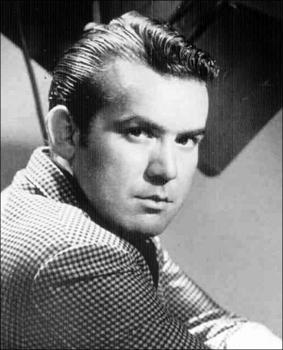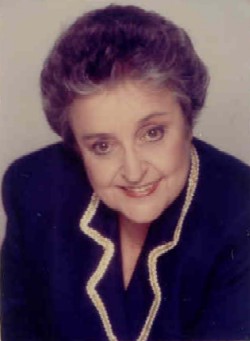Later years
As Tito Vicente, learned how to play various musical instruments, that led him, through modern technology, to become a one man band. He kept on taking advanced music lessons at the Conservatorio de Música Puertorriqueña, (Puerto Rican Conservatory of Music). Simultaneously, he was working with Elin Ortiz, as a music technician, playing background music for several of his television variety shows. His skills as a musician who plays several instruments during a solo performance, has led him to become the whole band and musical director of various singers in the island such as: Chucho Avellanet, Carmen Delia Dipini, Ruth Fernández, Lalo Rodríguez, Ismael Miranda, and mostly the multi-talented performer Carmen Nydia Velázquez, among many others. Vicente's been on tour in Madrid, Asturias, Milan Turín, Florida, Massachusetts, California, Connecticut, and Latin America.
As time goes by, day by day, Tito Vicente is well acknowledged for his achievements as a musician, who alone undertakes and is responsible for several tasks in the solo performance of different musical instruments, including the bass pedals, executed with his left foot.

The Music of Puerto Rico has evolved as a heterogeneous and dynamic product of diverse cultural resources. The most conspicuous musical sources of Puerto Rico have primarily included African, Taino Indigenous, and European influences. Puerto Rican music culture today comprises a wide and rich variety of genres, ranging from essentially native genres such as bomba, jíbaro, seis, danza, and plena to more recent hybrid genres such as salsa, Latin trap and reggaeton. Broadly conceived, the realm of "Puerto Rican music" should naturally comprise the music culture of the millions of people of Puerto Rican descent who have lived in the United States, especially in New York City. Their music, from salsa to the boleros of Rafael Hernández, cannot be separated from the music culture of Puerto Rico itself.

Hermes Davide Fastino Croatto Martinis, better known as Tony Croatto, was an Italian singer and composer best known for his interpretations of Spanish folkloric songs and music from Puerto Rico. His musical career began as part of the sibling musical group, Los TNT, with his siblings Nelly and Tim. He was also a television presenter.
Héctor Juan Pérez Martínez, better known as Héctor Lavoe, was a Puerto Rican salsa singer. Lavoe is considered to be possibly the best and most important singer and interpreter in the history of salsa music because he helped to establish the popularity of this musical genre in the decades of 1960s, 1970s and 1980s. His personality, style and the qualities of his voice led him to a successful artistic career in the whole field of Latin music and salsa during the 1970s and 1980s. The cleanness and brightness of his voice, coupled with impeccable diction and the ability to sing long and fast phrases with total naturalness, made him one of the favorite singers of the Latin public.

Juan Morel Campos, sometimes erroneously spelled Juan Morell Campos, was a Puerto Rican composer, considered by many to be responsible for taking the genre of danza to its highest level. He composed over 550 musical works before he died unexpectedly at age 38.
Michael Stuart is an American salsa singer, songwriter and actor.
Carlos Manuel "Charlie" Palmieri was a Puerto Rican bandleader and musical director of salsa music. He was known as the "Giant of the Keyboards".

Eddie Palmieri is an American Grammy Award-winning pianist, bandleader, musician, and composer of Corsican and Puerto Rican ancestry. He is the founder of the bands La Perfecta, La Perfecta II, and Harlem River Drive.

Paquito Cordero, was a pioneer of Puerto Rican television. He was also a comedian and a musical and television producer.
Nino Segarra is a Puerto Rican singer, composer, musician and musical arranger.

Vicente Carattini was a singer and composer of Puerto Rican Christmas-related songs.

Catalino "Tite" Curet Alonso was a Puerto Rican composer of over 2,000 salsa songs.
Oscar Hernández is an American pianist, arranger and producer of Puerto Rican descent.

William Richard Cumpiano is a builder of stringed musical instruments and is known for his writing and teaching of the art of luthiery. He has been involved in the preservation and understanding of the fading musical and musical craft traditions of his native Puerto Rico. Cumpiano was instrumental in the development of the first feature-length documentary about the cuatro and its music, Our Cuatro: The Puerto Ricans and Stringed Instruments, Volumes 1 and 2.

Puchi Balseiro (born Aurea Mercedes Balseiro; November 1, 1926, in Santurce, Puerto Rico – January 11, 2007) was a composer in the filin ("feeling") music genre.
José Nogueras is a composer, music producer, singer, guitarist, and performer of modern-day Puerto Rican music.

The Museo de la Música Puertorriqueña is a museum in Ponce, Puerto Rico, that showcases the development of Puerto Rican music, with displays of Taíno, Spanish, and African musical instruments that were played in the romantic danza genre, the favorite music of 19th-century Puerto Rican high society, as well as the more African-inspired bomba and plena styles. Also on display are memorabilia of composers and performers. The Museum traces the rich musical history of Puerto Rico through memorabilia of prominent musicians and displays of the musical instruments associated with the three genres of music that originated in this Caribbean island.
Tomás Rivera Morales, simply known as "Maso Rivera", was a Puerto Rican musician and a major exponent of Puerto Rico's Jíbaro music. Rivera composed over 1,000 instrumental compositions for the Cuatro, Puerto Rico's national instrument.

Elías López Sobá was a Puerto Rican classical music pianist and educator. Together with musical director Justino Diaz, Elias López Sobá co-directed the annual Casals Festival from 2010. Some sources considered him one of the most outstanding pianists and instrumentalists in 20th century Puerto Rico.
Antonio Cabán Vale,, also known as "El Topo", was a guitarist, singer and composer of Puerto Rican folkloric themes. He was one of the founders of the "new song" movement of the early 1970s. His danza Verde Luz became a popular symbol of national dignity, to the point that it is viewed by many as almost a second national anthem, and has been interpreted by international singers.
Carlos Luis Robles González, better known as Charlie Robles, was a Puerto Rican singer, composer, actor and teen-idol of the 1960s. Robles, along with others such as Chucho Avellanet, Lucecita Benitez, Julio Angel and a number of others, was considered a member of the Puerto Rican musical "Nueva Ola" of that era.









